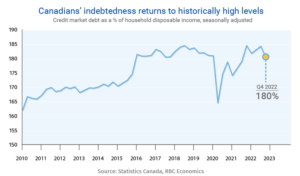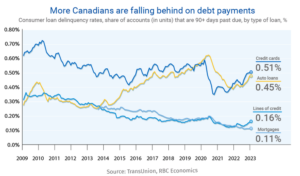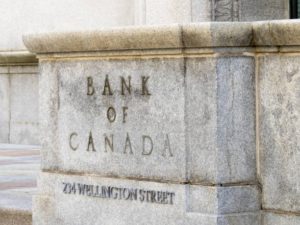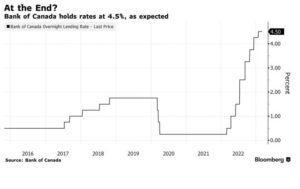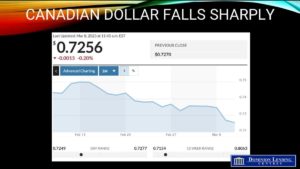Originally introduced to mitigate borrower default risks in the event of rising interest rates, some brokers now argue that Canada’s mortgage stress test is no longer needed with interest rates presumably near their peak.
Others, however, say it’s a tool that’s best left in place for the time being.
Back in 2016, the federal government rolled out the stress test as a way to curb risks associated with lending in times of low interest rates and high market prices. The test acts as a buffer, ensuring that potential homebuyers with a 20% or greater down payment are able to afford monthly mortgage payments at a rate of 5.25% or 2% over their contracted rate—whichever is greater.
Two years later, the Office of the Superintendent of Financial Institutions (OSFI) extended the test to apply to insured mortgages as well, or those with down payment of less than 20%.
As interest rates currently stand, this means today’s borrowers are having to qualify for mortgages at rates between 7% and 9%.
Is the stress test still necessary?
Though the stress test is still serving its purpose as a buffer for new homebuyers and investors, today’s economic and interest rate environment is quite different compared to when the stress tests were put in place.
That’s why some mortgage professionals say it’s time to take a hard look at the stress test.
“I would say that maybe the stress test applying 2% above what current rates are is exceeding what the risks are,” says Matt Albinati, a mortgage broker with TMG The Mortgage Group. “I am all for building a buffer for people’s financial situation, but the stress test limits the amount people can borrow.”
Albinati thinks that this change of environment does constitute a review of the stress test, something that OSFI does with its guidelines once a year.
“You look back a year, the stress test was doing a pretty good job. This time—or near in the future—it might be a good time to take a closer look at it,” he told CMT.
Others, however, like Tribe Financial CEO Frances Hinojosa, think the stress test should be left as is, at least for now.
“I don’t think we should be so quick to change the stress test until we’re out of the current economic storm that we’re in today,” she told CMT in an interview.
“At the end of the day, it is there to also protect the consumer [in addition to financial institutions] to ensure that they’re not over-leveraging themselves in a mortgage that they could potentially not be able to afford down the road,” she added.
Hinojosa thinks that the stress test proved its worth during the recent run-up in interest rates, the impact of which was felt immediately by adjustable-rate mortgage holders.
“What I noticed with a lot of these clients when the rates were ratcheting up was that it wasn’t a question of whether they couldn’t afford it,” she said. “It was just uncomfortable because they had to readjust the budget.”
Without the stress test in place when these borrowers were qualifying for their mortgages, they could have potentially over-leveraged themselves and potentially put themselves at risk of default if rates rose high enough, Hinojosa added.
Other lenders
While all federally regulated financial institutions are required to follow stress test guidelines, there are still other options for consumers.
Some provincial credit unions, for example, can issue mortgages with a qualifying rate equal to the contract rate or just 1% higher, giving stretched borrowers more leeway.
But, are they using credit unions?
Albinati and Gert Martens, a broker with Dominion Lending HT Mortgage Group based out of Grande Prairie, AB, say that their clients are not typically turning to credit unions.
Albinati noted that in order for his clients to receive insurance for their mortgage—which makes up about two-thirds of his purchase files—they will need to follow federal guidelines and qualify under the stress test.
Hinojosa, however, said she has seen the stress test push borrowers to other lending channels, including the private mortgage sector. “I think the other part of this is the unintended consequences of having such a high stress test,” she said. “It’s not only pushing clients necessarily to credit unions, [but] also increasing the amount of business that’s been going into alternative lenders.”
Although these alternative channels have seen a spike in activity, Hinojosa notes that it isn’t because these institutions do not stress test, but because they also have the ability to approve clients with extended debt-to-income ratios that the banks can’t necessarily do.
Albinati said he is also starting to send business to lenders other than the big banks. “We are doing a lot of renewals [and] pulling business away from the chartered banks, as they are not being competitive,” he said. “[With] record mortgage lending in 2020-2021, they are scaling back as mortgages are pretty competitive in terms of profit margins.”










